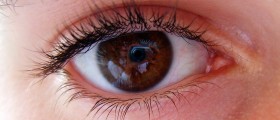
Bacterium Chlamydia trachomatis is known to cause chronic case of conjunctivitis and ocular morbidity. Most of the patients are children or women who work or look after children and some refer to trachoma as day nursery disease (or disease of the crèche).
Infected conjunctiva may undergo scarring, distortion of the upper tarsal plate and subsequent entropion and trichiasis. Further progression of trachoma is found to cause corneal abrasion or scarring, as well as opacifiation and patients may end up losing their vision (getting blind) due to this disease.
The World Health Organization (WHO) takes trachoma very seriously and recommends several treatment options for this problem. Medical treatment involves the use of antibiotic drugs, surgery, as well as facial cleanliness. Trachoma control and environmental improvement strategy are also important parts of WHO program against trachoma blindness.Antibiotics for Trachoma
To control trachoma the WHO advises using oral azithromycin or eye ointment containing tetracycline.
Although azithromycin works better, patients might not be able to get their hands on this drug since it is more expensive than tetracycline ointment. Besides high efficiency this drug is also found out to cause few adverse effects and it is considered to be better option because the patient needs one oral dose. Using azithromycin may cause rash or mild gastrointestinal upset in some patients.
Additionally, azithromycin may be useful for secondary infections of the skin, genital or respiratory tract.
Surgical Approach to Trachoma
SAFE strategy is considered to be the key for trachoma treatment. S is for surgical treatment of trichiasis, A stands for antibiotic treatment, F for facial cleanliness and E for environmental improvement.
Patients known to be at high risk for impairment of vision and blindness and those who have developed trichiasis are commonly referred to and treated by a surgeon. Eyelid surgery can correct entropion or trichiasis and prevent potential loss of vision, while eyelid rotation could limit progression of the disease and corneal scarring.Clean Face and Environmental Improvement Prevent Trachoma
According to some studies, facial cleanliness is the way to decrease the risk of developing trachoma and also the way to reduce the severity of already active trachoma.
Talking about environmental improvement, the most important things are activities promoting proper disposal of human feces as an integral part of improved household sanitation and also promotion of improved water supplies. Flies which transmit trachoma lay their eggs in the human feces and since it is very difficult to control their population by insecticide, prevention is possible by improvement of household sanitation.
Better personal and community hygiene is seen as a way to decrease prevalence and it may lead to disappearance of trachoma for good.

















Your thoughts on this
Loading...